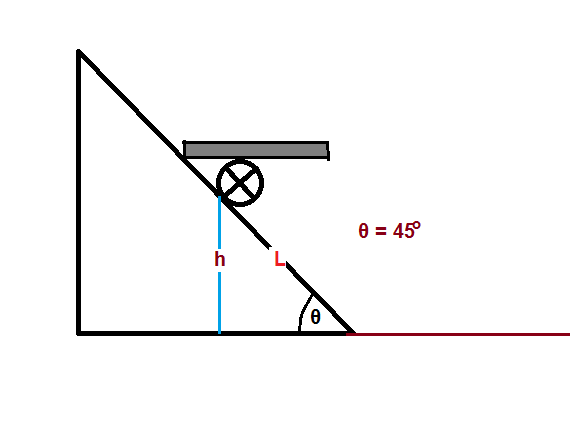Question details are below ?
A cannon mass 1000 kg located at the the base of an inclined plane fires a shell of mass 100 kg in a horizontal direction with a velocity 180 km/hr. The angle of inclination of inclined plane with horizontal is 45° . The coefficient of friction between the cannon and inclined plane is 0.5. The height in meter to which the cannon ascends the inclined plane as a result of recoil is: (g = 10m/s2)
(1) 7/6
(2) 5/6
(3) 2/6
(4) 1/6
A cannon mass 1000 kg located at the the base of an inclined plane fires a shell of mass 100 kg in a horizontal direction with a velocity 180 km/hr. The angle of inclination of inclined plane with horizontal is 45° . The coefficient of friction between the cannon and inclined plane is 0.5. The height in meter to which the cannon ascends the inclined plane as a result of recoil is: (g = 10m/s2)
(1) 7/6
(2) 5/6
(3) 2/6
(4) 1/6
1 Answer

Let
the mass of the cannon be
the mass of the shell be
the angle of inclination of the inclined plane be
the coefficient of friction between the cannon and inclined plane be
the velocity of the shell be
If the velocity of recoil of the cannon be
( the negative sign indicates the reverse direction of the cannon w r to the shell.)
If the height of ascent of the center of mass of the cannon over the inclined plane be
By conservation of energy the sum of gravitational potential energy gained by the cannon at height #h m and work done against the frictional force to reach at this height will be equal to the kinetic energy of the cannon due to its velocity of recoil.
So

